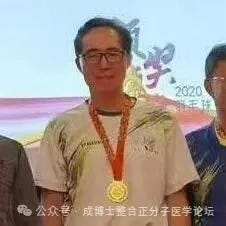
Richard Z. Cheng, M.D., Ph.D.
Introduction: From Gyms to Longevity Hubs
CrossFit and other forms of high-intensity training [1-3] have transformed fitness worldwide. Athletes in their 20s and 30s push limits, but often encounter plateaus: recovery slows, fatigue sets in, injuries take longer to heal.
At the same time, another demographic is surging - adults over 50 who seek not just fitness, but vitality, resilience, and independence [4,5]. They want energy for family, travel, and life.
The bridge between these two worlds is mitochondrial health.
Mitochondria: The Master Switch for Performance, Aging, and Disease
Mitochondria are not simply "power plants." They determine how effectively we move, recover, and resist disease.
For younger adults
- Endurance and performance: More mitochondria mean higher VO₂max, greater ATP production, and delayed fatigue. Even short-term interval training can rapidly increase mitochondrial density and oxidative enzyme activity [6-9].
- Recovery: Efficient mitochondria accelerate cellular repair, reduce soreness, and restore energy stores after exertion [9].
- Metabolic flexibility: Athletes with robust mitochondria switch smoothly between fat and carbohydrate fuels, burn less lactate, and sustain higher intensities [10-14].
| Benefit | Mitochondria's Role | Evidence |
|---|---|---|
| Endurance | ATP production, fatigue resistance, higher VO2max | [6,8] |
| Faster Recovery | Cellular repair, reduced soreness, rapid energy replenishment | [7,9] |
| Metabolic Flexibility | Efficient substrate switching, fat oxidation, lactate control | [10-12] |
For older adults
- Slowing aging: Declining mitochondrial function accelerates oxidative stress, inflammation, and tissue damage. Exercise and caloric restriction preserve mitochondrial biogenesis and delay these processes [15-18].
- Muscle preservation: Impaired mitochondria contribute to sarcopenia. High-intensity or resistance exercise helps maintain muscle quality by improving mitochondrial turnover and reducing oxidative damage [19-23].
- Cardiovascular protection: Strong mitochondrial capacity reduces the risk of heart disease and preserves cardiac output with age [24-26].
- Cancer and dementia prevention: Dysfunctional mitochondria drive genomic instability, oxidative injury, and impaired cell regulation - mechanisms linked with both cancer and neurodegeneration. Restoring mitochondrial health reduces risk [25-29].
| Effect | Mitochondria's Role | Evidence |
|---|---|---|
| Slow Aging | Maintain cellular energy, curb oxidative stress | [15,17,18] |
| Preserve Muscle | Support muscle mass/function; mitigate sarcopenia | [19-22] |
| Protect the Heart | Prevent cardiac aging; improve myocardial energetics | [24,25] |
| Reduce Cancer/Dementia | Limit oxidative damage, neurodegeneration, mutations | [19,20,25] |
In short:
- For the young: mitochondria = peak performance.
- For the old: mitochondria = resilience and independence.
Why Mitochondria Fail: Upstream Root Causes
In my From Mutation to Metabolism series, I outlined ten upstream categories of root causes that converge on mitochondrial dysfunction - not only in cancer, but also in atherosclerotic cardiovascular disease (ASCVD), diabetes, and aging [28,29]. Across chronic diseases, recurring upstream drivers consistently damage mitochondria:
- Environmental and dietary toxins - pesticides, plastics, heavy metals, processed foods.
- Nutrient deficiencies - inadequate vitamins, minerals, and antioxidants.
- Chronic inflammation and infections - driving oxidative stress and immune imbalance.
- Hormonal and metabolic disruption - insulin resistance, circadian rhythm disturbances.
- Lifestyle and psychosocial stressors - poor sleep, overtraining, emotional stress.
👉 Additional note:
Bright environmental light-especially intense blue-spectrum light-can oxidize mitochondrial cytochromes in the retina because of their chromophore sensitivity, damaging mitochondrial DNA and metabolism. Prolonged exposure to bright sunlight, snow glare, or beach reflections can therefore accelerate oxidative injury to retinal mitochondria. Wearing dark or protective glasses in such conditions helps preserve mitochondrial health in the eyes and nervous system [30-33].
The Central Role of Toxins
As outlined in Part 2 of my series [29], many modern toxins are directly mitochondriotoxic:
- Plastics and pesticides disrupt mitochondrial respiratory chain enzymes.
- Heavy metals (e.g., mercury, lead) generate ROS and collapse redox balance.
- Ultra-processed foods introduce emulsifiers and additives that damage gut barriers, triggering systemic inflammation that impairs mitochondria.
- Air pollutants and endocrine disruptors accelerate cardiovascular aging, diabetes, and neurodegeneration via mitochondrial injury.
These burdens help explain why a 30-year-old athlete hits a plateau and why a 60-year-old loses vitality more rapidly.
Critique of the "Hallmarks of Aging"
The Hallmarks of Aging framework [34,35] has shaped much of modern geroscience for over a decade. First proposed in 2013 [34] with nine categories - genomic instability, telomere attrition, epigenetic alterations, loss of proteostasis, deregulated nutrient sensing, mitochondrial dysfunction, cellular senescence, stem cell exhaustion, and altered intercellular communication - it was expanded in 2023 [35] to twelve by adding disabled macroautophagy, chronic inflammation ("inflammaging"), and microbiome disturbance.
This framework has been valuable for organizing observations. Yet the "hallmarks" are downstream expressions, not true root causes. Many hallmarks-genomic instability, telomere attrition, epigenetic alterations, deregulated nutrient sensing, senescence, stem cell exhaustion, inflammaging-are driven by earlier mitochondrial stress (e.g., ROS, redox collapse, NAD⁺/ATP imbalance) and upstream toxins, infections, and deficiencies.
- Genomic instability is largely fueled by mitochondrial ROS, toxins, and micronutrient deficiencies.
- Telomere attrition reflects oxidative stress, inflammation, and metabolic overload - all downstream effects of mitochondrial stress.
- Epigenetic alterations mirror environmental and nutritional inputs mediated through mitochondrial metabolism.
- Nutrient sensing pathways (AMPK, mTOR, sirtuins) are set by mitochondrial NAD⁺/ATP balance.
- Senescence and stem cell exhaustion accelerate when mitochondrial energy reserves collapse.
- Inflammaging (chronic low-grade inflammation) is often initiated by mitochondrial danger signals (mtDNA fragments, ROS leakage) and perpetuated by toxin exposure.
In other words, what López-Otín and colleagues cataloged as "hallmarks" are symptoms, not origins.
From the Integrative Orthomolecular Medicine (IOM) perspective, the true root drivers of aging are the same ten categories I have outlined in my From Mutation to Metabolism series: dietary imbalance, environmental toxins, chronic infections, gut dysbiosis, oxidative stress, chronic inflammation, hormonal and metabolic dysregulation, immune dysfunction, stem cell exhaustion, and psychological stress/lifestyle imbalance.
All of these upstream drivers converge on mitochondrial dysfunction, making mitochondria the master hallmark and central integrator of aging.
Therefore:
- The "hallmarks" are descriptive signs - useful markers of damage and dysfunction.
- But they are not initiating drivers. They do not explain why mitochondria fail in the first place.
- True intervention requires moving upstream, addressing toxins, nutrient deficiencies, infections, and metabolic stress - the real starting points of aging.
This reorientation is critical for both science and practice. Focusing on superficial hallmarks risks expensive "miracle anti-aging drugs" that tweak pathways but never address root causes. By contrast, targeting upstream drivers - through diet, detoxification, orthomolecular nutrition, exercise, and lifestyle - restores mitochondria and improves multiple hallmarks simultaneously.
IOM Mitochondria Optimization: What Works
Low-Carb, Ketogenic Diet and Intermittent Fasting: Fuel for Mitochondria
One of the most powerful ways to restore mitochondrial health is through dietary strategy.
- Low-Carb and Ketogenic Diets: Restricting carbohydrates lowers blood sugar and insulin, reducing mitochondrial overload and oxidative stress. Ketones (β-hydroxybutyrate) serve as a clean fuel, generating fewer reactive oxygen species compared to glucose. Studies show ketogenic metabolism enhances mitochondrial biogenesis, improves redox balance, and increases resilience against oxidative injury [36,37,37,38].
- Intermittent Fasting: Periods of fasting activate AMPK and sirtuin pathways, stimulating autophagy and mitochondrial renewal. Fasting also lowers inflammation, improves insulin sensitivity, and promotes metabolic flexibility [39-41].
- Exercise Endurance Benefits: Both ketogenic metabolism and intermittent fasting increase reliance on fat oxidation, sparing glycogen and reducing lactate buildup. Endurance athletes often experience improved "second wind" capacity, greater stamina, and faster recovery when adapted to fat and ketones as fuel. Older adults also gain - fasting and low-carb diets preserve muscle, maintain mitochondrial biogenesis, and prevent fatigue from rapid glucose swings [42,43].
- Clinical Impact: Together, low-carb and fasting strategies have demonstrated benefits for diabetes, obesity, neurodegenerative conditions, cancer management, and longevity. For athletes, they improve fat oxidation and endurance. For older adults, they preserve function and delay age-related decline [44-47].
In practical terms: alternating between fasting periods and fat-based fuel sources mimics evolutionary energy cycles - giving mitochondria both rest and renewal.
Key Nutrients and Lifestyle Interventions
Exercise is the ignition. Nutrition is the fuel. Together, they upgrade mitochondria.
- Vitamin C - 3,000-10,000 mg/day in divided doses. Supports recovery, collagen formation, antioxidant defense, and vascular health [48].
- Vitamin D3 - 5,000-10,000 IU/day, adjusted to maintain blood levels of 50-100 ng/ml. Strengthens immunity, bones, and muscles [49,50].
- Niacin (B3) - 500-2,000 mg/day of instant-release niacin (titrated upward to minimize flushing). Boosts NAD⁺ and supports mitochondrial repair [51-53].
- Magnesium - 500-1,000 mg/day (glycinate or threonate forms preferred). Critical for ATP production, muscle relaxation, and energy metabolism [54,55].
- CoQ10 - 200-400 mg/day. Enhances cardiac function, endurance, and mitochondrial electron transport.
- Omega-3 - 2,000 mg/day or more of combined EPA+DHA from marine sources. Provides anti-inflammatory and neuroprotective benefits.
- L-carnitine - 1,000-3,000 mg/day. Facilitates fatty acid transport into mitochondria, improving fat burning and exercise endurance.
- Sleep, stress control, circadian rhythm - Protect mitochondrial repair cycles.
- Other supportive tools: Red-Blue therapy (NIR/PBMT + methylene blue), and additional orthomolecular nutrients.
For younger athletes: better performance and fewer injuries.
For seniors: slowing aging, preventing ASCVD and cancer, preserving independence.
Conclusion: The Mitochondrial Advantage
- For the young: mitochondria mean performance and endurance.
- For the old: mitochondria mean resilience and youthfulness.
- For all: mitochondria are the master hallmark - the central key to energy, health, and longevity.
One mitochondrion, one solution: energy for life.
I am living proof myself. For nearly two decades, I have practiced intermittent fasting, usually eating only two meals a day-the first after noon and the last before 7 p.m. In the mornings, I often play competitive badminton on an empty stomach, usually for two hours. I can still vigorously compete with players who are 10, 20, or even 30 years younger than me. I hardly experience significant low blood sugar symptoms, even if I fast for more than a day. This is because I have effectively trained my body to release, burn, and convert stored fat into energy-whereas many people cannot.
What I often see is that many younger players run out of energy and show signs of fatigue, while I'm still going strong-almost like the Energizer Bunny. People often ask me what my secret is. Half-jokingly, I reply: I'm a meat eater, while you are grass eaters (carbs). 🤣
- For young athletes: mitochondria = peak performance.
- For seniors: mitochondria = youthfulness and resilience.
About the Author
Richard Z. Cheng, M.D., Ph.D. - Editor-in-Chief, Orthomolecular Medicine News Service
Dr. Cheng is a U.S.-based, NIH-trained, board-certified physician specializing in integrative cancer therapy, orthomolecular medicine, functional & anti-aging medicine. He maintains active practices in both the United States and China.
A Fellow of the American Academy of Anti-Aging Medicine and a Hall of Fame inductee of the International Society for Orthomolecular Medicine, Dr. Cheng is a leading advocate for nutrition-based, root-cause health strategies. He also serves as an expert reviewer for the South Carolina Board of Medical Examiners, and co-founded both the China Low Carb Medicine Alliance and the Society of International Metabolic Oncology.
Dr. Cheng offers online Integrative Orthomolecular Medicine consultation services.
📰 Follow his latest insights on Substack: https://substack.com/@rzchengmd
References:
1. Gibala, M.J.; McGee, S.L. Metabolic Adaptations to Short-Term High-Intensity Interval Training: A Little Pain for a Lot of Gain? Exerc Sport Sci Rev 2008, 36, 58-63, doi:10.1097/JES.0b013e318168ec1f.
2. Batacan, R.B.; Duncan, M.J.; Dalbo, V.J.; Tucker, P.S.; Fenning, A.S. Effects of High-Intensity Interval Training on Cardiometabolic Health: A Systematic Review and Meta-Analysis of Intervention Studies. Br J Sports Med 2017, 51, 494-503, doi: 10.1136/bjsports-2015-095841.
3. Nicolò, A.; Girardi, M. The Physiology of Interval Training: A New Target to HIIT. J Physiol 2016, 594, 7169-7170, doi: 10.1113/JP273466.
4. Pak, C.; Kambil, A. Over 50 and Ready to Shop: Serving the Aging Consumer. Journal of Business Strategy 2006, 27, 18-28, doi: 10.1108/02756660610710319.
5. Barbaccia, V.; Bravi, L.; Murmura, F.; Savelli, E.; Viganò, E. Mature and Older Adults' Perception of Active Ageing and the Need for Supporting Services: Insights from a Qualitative Study. Int J Environ Res Public Health 2022, 19, 7660, doi: 10.3390/ijerph19137660.
6. Zoladz, J.A.; Majerczak, J.; Galganski, L.; Grandys, M.; Zapart-Bukowska, J.; Kuczek, P.; Kołodziejski, L.; Walkowicz, L.; Szymoniak-Chochół, D.; Kilarski, W.; et al. Endurance Training Increases the Running Performance of Untrained Men without Changing the Mitochondrial Volume Density in the Gastrocnemius Muscle. Int J Mol Sci 2022, 23, 10843, doi: 10.3390/ijms231810843.
7. Mesquita, P.H.C.; Vann, C.G.; Phillips, S.M.; McKendry, J.; Young, K.C.; Kavazis, A.N.; Roberts, M.D. Skeletal Muscle Ribosome and Mitochondrial Biogenesis in Response to Different Exercise Training Modalities. Front Physiol 2021, 12, 725866, doi: 10.3389/fphys.2021.725866.
8. Feng, Y.; Rao, Z.; Tian, X.; Hu, Y.; Yue, L.; Meng, Y.; Zhong, Q.; Chen, W.; Xu, W.; Li, H.; et al. Endurance Training Enhances Skeletal Muscle Mitochondrial Respiration by Promoting MOTS-c Secretion. Free Radic Biol Med 2025, 227, 619-628, doi: 10.1016/j.freeradbiomed.2024.12.038.
9. MacInnis, M.J.; Zacharewicz, E.; Martin, B.J.; Haikalis, M.E.; Skelly, L.E.; Tarnopolsky, M.A.; Murphy, R.M.; Gibala, M.J. Superior Mitochondrial Adaptations in Human Skeletal Muscle after Interval Compared to Continuous Single-Leg Cycling Matched for Total Work. J Physiol 2017, 595, 2955-2968, doi: 10.1113/JP272570.
10. San-Millán, I.; Brooks, G.A. Assessment of Metabolic Flexibility by Means of Measuring Blood Lactate, Fat, and Carbohydrate Oxidation Responses to Exercise in Professional Endurance Athletes and Less-Fit Individuals. Sports Med 2018, 48, 467-479, doi: 10.1007/s40279-017-0751-x.
11. Lovell, D.I.; Stuelcken, M.; Eagles, A. Exercise Testing for Metabolic Flexibility: Time for Protocol Standardization. Sports Med Open 2025, 11, 31, doi: 10.1186/s40798-025-00825-w.
12. Palmer, B.F.; Clegg, D.J. Metabolic Flexibility and Its Impact on Health Outcomes. Mayo Clin Proc 2022, 97, 761-776, doi: 10.1016/j.mayocp.2022.01.012.
13. Smith, R.L.; Soeters, M.R.; Wüst, R.C.I.; Houtkooper, R.H. Metabolic Flexibility as an Adaptation to Energy Resources and Requirements in Health and Disease. Endocr Rev 2018, 39, 489-517, doi: 10.1210/er.2017-00211.
14. Flockhart, M.; Nilsson, L.C.; Tais, S.; Ekblom, B.; Apró, W.; Larsen, F.J. Excessive Exercise Training Causes Mitochondrial Functional Impairment and Decreases Glucose Tolerance in Healthy Volunteers. Cell Metab 2021, 33, 957-970.e6, doi: 10.1016/j.cmet.2021.02.017.
15. Chistiakov, D.A.; Sobenin, I.A.; Revin, V.V.; Orekhov, A.N.; Bobryshev, Y.V. Mitochondrial Aging and Age-Related Dysfunction of Mitochondria. Biomed Res Int 2014, 2014, 238463, doi: 10.1155/2014/238463.
16. Srivastava, S. The Mitochondrial Basis of Aging and Age-Related Disorders. Genes (Basel) 2017, 8, 398, doi: 10.3390/genes8120398.
17. Somasundaram, I.; Jain, S.M.; Blot-Chabaud, M.; Pathak, S.; Banerjee, A.; Rawat, S.; Sharma, N.R.; Duttaroy, A.K. Mitochondrial Dysfunction and Its Association with Age-Related Disorders. Front Physiol 2024, 15, 1384966, doi: 10.3389/fphys.2024.1384966.
18. Jia, L.; Wei, Z.; Luoqian, J.; Wang, X.; Huang, C. Mitochondrial Dysfunction in Aging: Future Therapies and Precision Medicine Approaches. MedComm - Future Medicine 2025, 4, e70026, doi: 10.1002/mef2.70026.
19. Coen, P.M.; Musci, R.V.; Hinkley, J.M.; Miller, B.F. Mitochondria as a Target for Mitigating Sarcopenia. Front Physiol 2018, 9, 1883, doi: 10.3389/fphys.2018.01883.
20. Short, K.R.; Bigelow, M.L.; Kahl, J.; Singh, R.; Coenen-Schimke, J.; Raghavakaimal, S.; Nair, K.S. Decline in Skeletal Muscle Mitochondrial Function with Aging in Humans. Proc Natl Acad Sci U S A 2005, 102, 5618-5623, doi: 10.1073/pnas.0501559102.
21. Wyckelsma, V.L.; Levinger, I.; McKenna, M.J.; Formosa, L.E.; Ryan, M.T.; Petersen, A.C.; Anderson, M.J.; Murphy, R.M. Preservation of Skeletal Muscle Mitochondrial Content in Older Adults: Relationship between Mitochondria, Fibre Type and High-Intensity Exercise Training. J Physiol 2017, 595, 3345-3359, doi: 10.1113/JP273950.
22. Crupi, A.N.; Nunnelee, J.S.; Taylor, D.J.; Thomas, A.; Vit, J.-P.; Riera, C.E.; Gottlieb, R.A.; Goodridge, H.S. Oxidative Muscles Have Better Mitochondrial Homeostasis than Glycolytic Muscles throughout Life and Maintain Mitochondrial Function during Aging. Aging (Albany NY) 2018, 10, 3327-3352, doi: 10.18632/aging.101643.
23. Burtscher, J.; Strasser, B.; Burtscher, M. A Mito-Centric View on Muscle Aging and Function. Front Public Health 2023, 11, 1330131, doi: 10.3389/fpubh.2023.1330131.
24. Dai, D.-F.; Rabinovitch, P.S.; Ungvari, Z. Mitochondria and Cardiovascular Aging. Circ Res 2012, 110, 1109-1124, doi: 10.1161/CIRCRESAHA.111.246140.
25. Sinha, A.; Jaiswal, N.; Jadiya, P.; Tomar, D. Mitochondrial Connection to Alzheimer's Disease and Heart Failure. Current Opinion in Physiology 2025, 44, 100830, doi: 10.1016/j.cophys.2025.100830.
26. Mi, Y.; Qi, G.; Brinton, R.D.; Yin, F. Mitochondria-Targeted Therapeutics for Alzheimer's Disease: The Good, the Bad, the Potential. Antioxid Redox Signal 2021, 34, 611-630, doi: 10.1089/ars.2020.8070.
27. Broadfoot, M. Mitochondrial Dysfunction Linked to Alzheimer's Onset and Treatment Response. Mayo Clinic News Network 2025.
28. Cheng, R.Z. From Mutation to Metabolism: Root Cause Analysis of Cancer's Initiating Drivers 2025.
29. Cheng, R.Z. From Mutation to Metabolism: Environmental and Dietary Toxins as Upstream Drivers of Mitochondrial Dysfunction and Chronic Disease 2025.
30. Tao, J.-X.; Zhou, W.-C.; Zhu, X.-G. Mitochondria as Potential Targets and Initiators of the Blue Light Hazard to the Retina. Oxidative medicine and cellular longevity 2019, 2019, doi: 10.1155/2019/6435364.
31. Osborne, N.N.; Kamalden, T.A.; Majid, A.S.A.; del Olmo-Aguado, S.; Manso, A.G.; Ji, D. Light Effects on Mitochondrial Photosensitizers in Relation to Retinal Degeneration. Neurochem Res 2010, 35, 2027-2034, doi: 10.1007/s11064-010-0273-5.
32. Godley, B.F.; Shamsi, F.A.; Liang, F.-Q.; Jarrett, S.G.; Davies, S.; Boulton, M. Blue Light Induces Mitochondrial DNA Damage and Free Radical Production in Epithelial Cells. J Biol Chem 2005, 280, 21061-21066, doi: 10.1074/jbc.M502194200.
33. Osborne, N.N.; Núñez-Álvarez, C.; Del Olmo-Aguado, S. The Effect of Visual Blue Light on Mitochondrial Function Associated with Retinal Ganglions Cells. Exp Eye Res 2014, 128, 8-14, doi: 10.1016/j.exer.2014.08.012.
34. López-Otín, C.; Blasco, M.A.; Partridge, L.; Serrano, M.; Kroemer, G. The Hallmarks of Aging. Cell 2013, 153, 1194-1217, doi: 10.1016/j.cell.2013.05.039.
35. López-Otín, C.; Blasco, M.A.; Partridge, L.; Serrano, M.; Kroemer, G. Hallmarks of Aging: An Expanding Universe. Cell 2023, 186, 243-278, doi: 10.1016/j.cell.2022.11.001.
36. Hasan-Olive, M.M.; Lauritzen, K.H.; Ali, M.; Rasmussen, L.J.; Storm-Mathisen, J.; Bergersen, L.H. A Ketogenic Diet Improves Mitochondrial Biogenesis and Bioenergetics via the PGC1α-SIRT3-UCP2 Axis. Neurochem Res 2019, 44, 22-37, doi: 10.1007/s11064-018-2588-6.
37. Rojas-Morales, P.; Pedraza-Chaverri, J.; Tapia, E. Ketone Bodies, Stress Response, and Redox Homeostasis. Redox Biol 2020, 29, 101395, doi: 10.1016/j.redox.2019.101395.
38. Chu, Y.; Zhang, C.; Xie, M. Beta-Hydroxybutyrate, Friend or Foe for Stressed Hearts. Front Aging 2021, 2, 681513, doi: 10.3389/fragi.2021.681513.
39. Conn, M.O.; Marko, D.M.; Schertzer, J.D. Intermittent Fasting Increases Fat Oxidation and Promotes Metabolic Flexibility in Lean Mice but Not Obese Type 2 Diabetic Mice. Am J Physiol Endocrinol Metab 2024, 327, E470-E477, doi: 10.1152/ajpendo.00255.2024.
40. Zhang, A.; Wang, J.; Zhao, Y.; He, Y.; Sun, N. Intermittent Fasting, Fatty Acid Metabolism Reprogramming, and Neuroimmuno Microenvironment: Mechanisms and Application Prospects. Front Nutr 2024, 11, 1485632, doi: 10.3389/fnut.2024.1485632.
41. Anton, S.D.; Moehl, K.; Donahoo, W.T.; Marosi, K.; Lee, S.A.; Mainous, A.G.; Leeuwenburgh, C.; Mattson, M.P. Flipping the Metabolic Switch: Understanding and Applying the Health Benefits of Fasting. Obesity (Silver Spring) 2018, 26, 254-268, doi: 10.1002/oby.22065.
42. Holcomb, L.E.; O'Neill, C.C.; DeWitt, E.A.; Kolwicz, S.C. The Effects of Fasting or Ketogenic Diet on Endurance Exercise Performance and Metabolism in Female Mice. Metabolites 2021, 11, 397, doi: 10.3390/metabo11060397.
43. McSwiney, F.T.; Wardrop, B.; Hyde, P.N.; Lafountain, R.A.; Volek, J.S.; Doyle, L. Keto-Adaptation Enhances Exercise Performance and Body Composition Responses to Training in Endurance Athletes. Metabolism 2018, 81, 25-34, doi: 10.1016/j.metabol.2017.10.010.
44. Hansen, B.; Roomp, K.; Ebid, H.; Schneider, J.G. Perspective: The Impact of Fasting and Caloric Restriction on Neurodegenerative Diseases in Humans. Adv Nutr 2024, 15, 100197, doi: 10.1016/j.advnut.2024.100197.
45. Arora, S.K.; McFarlane, S.I. The Case for Low Carbohydrate Diets in Diabetes Management. Nutr Metab (Lond) 2005, 2, 16, doi: 10.1186/1743-7075-2-16.
46. Choi, J.H.; Cho, Y.J.; Kim, H.-J.; Ko, S.-H.; Chon, S.; Kang, J.-H.; Kim, K.-K.; Kim, E.M.; Kim, H.J.; Song, K.-H.; et al. Effect of Carbohydrate-Restricted Diets and Intermittent Fasting on Obesity, Type 2 Diabetes Mellitus, and Hypertension Management: Consensus Statement of the Korean Society for the Study of Obesity, Korean Diabetes Association, and Korean Society of Hypertension. J Obes Metab Syndr 2022, 31, 100-122, doi: 10.7570/jomes22009.
47. Gavidia, K.; Kalayjian, T. Treating Diabetes Utilizing a Low Carbohydrate Ketogenic Diet and Intermittent Fasting Without Significant Weight Loss: A Case Report. Front Nutr 2021, 8, 687081, doi: 10.3389/fnut.2021.687081.
48. Levy, T.E.; Gordon, G. Primal Panacea; 2012 Second Printing edition.; Medfox Publishing: Henderson, NV, 2011; ISBN 978-0-9837728-0-4.
49. Grant, W.B.; Wimalawansa, S.J.; Pludowski, P.; Cheng, R.Z. Vitamin D: Evidence-Based Health Benefits and Recommendations for Population Guidelines. Nutrients 2025, 17, 277, doi: 10.3390/nu17020277.
50. Grant, W.B.; Boucher, B.J.; Cheng, R.Z.; Pludowski, P.; Wimalawansa, S.J. Vitamin D and Cardiovascular Health: A Narrative Review of Risk Reduction Evidence. Nutrients 2025, 17, 2102, doi: 10.3390/nu17132102.
51. Pirinen, E.; Auranen, M.; Khan, N.A.; Brilhante, V.; Urho, N.; Pessia, A.; Hakkarainen, A.; Kuula, J.; Heinonen, U.; Schmidt, M.S.; et al. Niacin Cures Systemic NAD+ Deficiency and Improves Muscle Performance in Adult-Onset Mitochondrial Myopathy. Cell Metab 2020, 31, 1078-1090.e5, doi: 10.1016/j.cmet.2020.04.008.
52. Cantó, C.; Menzies, K.J.; Auwerx, J. NAD(+) Metabolism and the Control of Energy Homeostasis: A Balancing Act between Mitochondria and the Nucleus. Cell Metab 2015, 22, 31-53, doi: 10.1016/j.cmet.2015.05.023.
53. Beltrà, M.; Pöllänen, N.; Fornelli, C.; Tonttila, K.; Hsu, M.Y.; Zampieri, S.; Moletta, L.; Corrà, S.; Porporato, P.E.; Kivelä, R.; et al. NAD+ Repletion with Niacin Counteracts Cancer Cachexia. Nat Commun 2023, 14, 1849, doi: 10.1038/s41467-023-37595-6.
54. Levy, T. Magnesium: Reversing Disease: Levy MD, Jd: 9780998312408: Amazon.Com: Books Available online: https://www.amazon.com/Magnesium-Reversing-MD-Jd-Levy/dp/0998312401/ref=pd_lpo_2?pd_rd_i=0998312401&psc=1 (accessed on 12 February 2022).
55. Dean, C. The Magnesium Miracle (Second Edition): Dean M.D. N.D., Carolyn: 9780399594441: Amazon.Com: Books Available online: https://www.amazon.com/Magnesium-Miracle-Second-Carolyn-Dean/dp/0399594442 (accessed on 12 February 2022).










